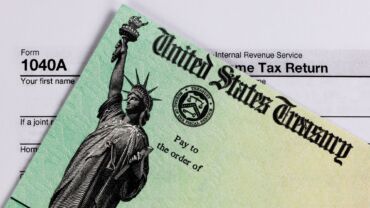Part 1 of this blogpost explains how prevalent payroll is in our daily lives with a focus on key issues in 2022, including worker classification, COVID-19 vaccine mandates, and wage and hour. Read part 2 for more 2022 payroll trends.
On a recent weekend getaway from Hoboken, New Jersey to Miami, Florida, I observed just how ubiquitous the subject of payroll is in our lives on a day-to-day basis. It was a frigid Saturday morning in mid-January. I was pinching the collar of my topcoat closed while waiting on the street corner for my app-based driver. When the driver pulled up, I threw my carry-on bag in the trunk and hopped in the back seat.
Worker classification
Now, in New Jersey, state law dictates the ABC test to be used to determine worker classification. This means a worker is basically considered an employee by default unless three specific criteria are met. Back in 2019, New Jersey hit app-based driving company Uber up with a $640 million tax bill alleging misclassification of its workers as independent contractors.
California also uses the ABC test for worker classification purposes. However, a voter-approved November 2020 ballot (Proposition 22) item exempted app-based driving companies like Uber from the rule. But then the state challenged the ballot item in court, and in August 2021, it was ruled unconstitutional. The ruling is currently being appealed, so it may change again.
Worker classification is a big issue for businesses. It can result in costly penalties and the payment of back wages and taxes. Even if an employer uses a third-party resource for payroll purposes, the onus typically remains on the business to make sure payroll matters comply with all the laws, rules, and regulations at the federal, state, and local levels.
The IRS has some information on its website for employers regarding worker classification. Form SS-8, Determination of Worker Status for Purposes of Federal Employment Taxes and Income Tax Withholding, can also be used to request a worker classification determination. Generally, the IRS takes the approach under the common law rules that a worker is an employee if the business has the right to control what will be done and how it is done. Form SS-8 requests are only made to resolve federal tax matters.
The U.S. Department of Labor (DOL) also has guidance on its website regarding worker classification. The guidance generally says that workers are independent contractors if they run their own business, are paid upon completion of the project, provide their own tools, work with multiple clients, decide when and how they will perform the work, and decide what work they will do. Workers who are employees are protected under the Fair Labor Standards Act (FLSA) for things like minimum wage, overtime, hours worked, recordkeeping, and child labor.
States may also have rules for deciding worker classification. As already mentioned, New Jersey and California use the ABC test, which only considers workers to be independent contractors if they are: (A) free from direction and control, (B) customarily engaged in an independent trade or business, and (C) preforming work outside the usual course of the hiring entity’s business.
It is important for businesses to know the laws, rules, and regulations for worker classification to avoid lawsuits, fines, and penalties. There may be more changes in 2022. The National Labor Review Board is currently inviting briefs regarding its independent contractor standard. The due date for these submissions is February 10, 2022.
The Payroll Guide on Checkpoint Edge provides detailed guidance on worker classification that includes a quick reference chart and create-a-chart tool explaining the rules for classification in each state.
COVID-19 vaccine requirements for employers
When I got to Newark Liberty Airport, I made my way through the Transportation Security Administration (TSA) checks and only removed my mask for a few moments when prompted by security for identification verification purposes. I’m fully vaccinated for the coronavirus (COIVD-19). But that vaccination may have been a requirement by the federal government if the Biden administration’s vaccine and testing rule for employers with 100 or more employees had been upheld by the U.S. Supreme Court. However, SCOTUS ruled against that mandate on January 13, 2022. The Occupational Safety and Health Administration (OSHA) withdrew this rule on January 26, 2022. That said, employers can still require employees to be vaccinated or tested for the virus, among other COVID-19 prevention and safety measures that include wearing masks.
For TSA employees, who are considered federal employees, there is another COVID-19 vaccination requirement from the Biden administration. This order is also facing lawsuits. On January 21, 2022, a federal court judge in Texas blocked the enforcement of that requirement (Feds for Medical Freedom et al v. Biden, S.D. Tex., No. 3:21-cv-00356, 01/21/22). That ruling is being appealed.
To make matters more confusing for employers, certain states have requirements when it comes to the COVID-19 vaccine and/or testing. Other states have rules that forbid such actions. Fines and penalties may result if employers do not keep up with the changes. Employers can additionally have COVID-19 vaccine requirements as a condition of employment. This includes several airline companies.
A colleague of mine recently posted a Thomson Reuters tax blog on the topic of COVID-19 vaccine mandates in all 50 states – more specifically, the vaccine mandates (if any), worker refusal for the vaccine, and unemployment benefits. See Employer Vaccine Mandates, Worker Refusals, and Unemployment Benefits (01/24/22) for more information.
Although OSHA has officially withdrawn its rule for COVID-19 vaccines or testing for employers with 100 or more employees, it has a webpage that provides guidance for employers that may want to implement some form of vaccine and testing requirement for their workers. OSHA said that while it has withdrawn its rule as an Emergency Temporary Standard (ETS), it is not withdrawing the ETS as a proposed rule. OSHA added that it is prioritizing its resources to focus on finalizing a permanent COVID-19 Healthcare Standard. More on this should be expected during 2022.
The Payroll Guide for Checkpoint Edge has a wealth of COVID-19 information that includes vaccination requirements at the federal and state levels. Our COVID-19 for Pay section has in-depth information about federal and state law changes due to the pandemic. There are also create-a-charts specific to issues from the health emergency.
Wage and hour
After landing at Miami International Airport, I arranged for an app-based driver to take me to my hotel in Miami Beach. In Florida, according to the state’s Department of Economic Opportunity (DEO), app-based drivers are considered independent contractors and are not entitled to unemployment benefits. So, my Uber driver in New Jersey may be considered an employee while my driver for the same company in Florida is considered an independent contractor. Multi-state employers definitely want to be aware of these differences.
After being dropped off, I entered the lobby of the hotel I was staying at and was greeted by a very hospitable employee who directed me to the front desk. Many hotel workers are hourly employees, and there are a number of wage and hour and wage payment rules for workers in the service industry. There are both federal rules and state rules. There are even local rules – California, for example, has more than 40 localities with specific minimum wage changes that occur at differing times.
Florida’s current minimum wage is $10 per hour, with a cash wage for tipped employees of $6.98 per hour. The minimum wage rate for Florida employees will increase gradually to $15 per hour by 2026.
The DOL website notes that the federal minimum wage continues to be $7.25 per hour at the national level. Federal minimum wage provisions are contained in the FLSA. The DOL website also includes a map of minimum wage rates by U.S. state. Most states have some form of minimum wage laws with many minimum wage rates above the federal level.
In 2021, the Biden administration ordered federal workers to be paid a minimum wage of $15 per hour. On January 30, 2022, those minimum wage directives took effect. So now, all federal workers and those working on federal contracts must be paid at least $15 per hour. The Biden administration’s release on this explains that nearly 70,000 federal workers will earn $15 per hour and 300,000 employees of federal contractors will start to see the increase this year. The DOL’s blog also noted the increase.
In 2022, a number of minimum wage rate increases will take effect for many different states and localities. Some state laws increase the wage rate and then rely on the Consumer Price Index (CPI) for annual adjustments. Some states have staggered increases for small and large employers.
This year in Hawaii, lawmakers have proposed an $18 minimum wage rate increase for all employees in the state by 2026. The current minimum wage rate is $10.10 per hour. Hawaii Senate Bill 2018 passed in the Senate late in January 2022 and has been introduced in the House.
In addition, hourly workers are entitled to overtime pay. There are federal and state rules that employers must adhere to for this type of pay as well. The overtime calculation can get a little tricky when considering tipped employees as an employer must take into consideration the tip credit.
The Payroll Guide for Checkpoint Edge has information on wage and hour topics at the federal, state, and local levels that include minimum wage and overtime.
_______________________________________________________________________________








